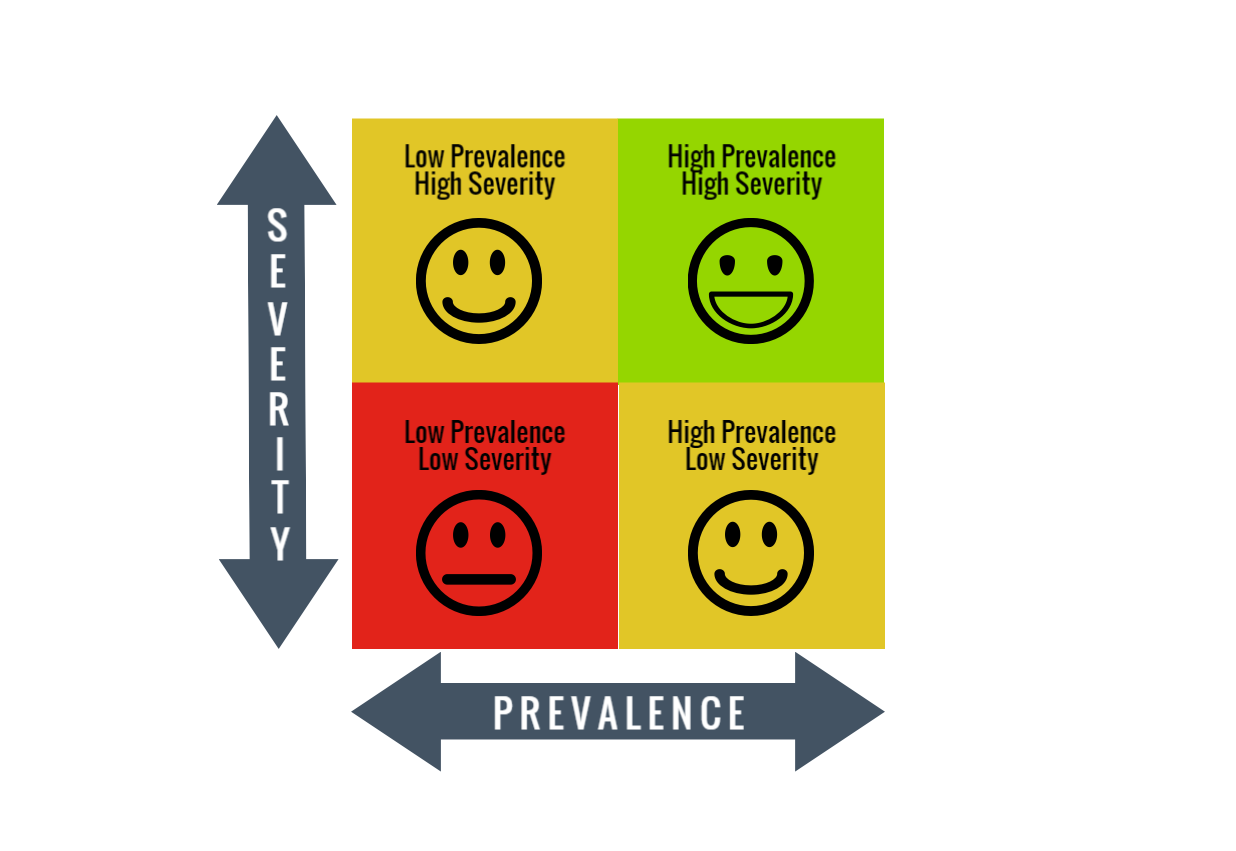But how do I pick?! Prioritizing needs
Last week I talked about how needs assessments are a great way to find out what your target audience needs, and what programs would be best to meet those needs. But what if you do a needs assessment, and it turns out that your constituents need about 1,000,000 things to have a happy, healthy, productive life? What do you do then?
None of us have limitless resources to spend on addressing the needs in our community. And as much as we’d like to fix everything, that’s just not humanly possible, especially in the very disadvantaged communities or the very vulnerable groups of constituents. So we end up focusing our time, effort, and resources on needs that are both common and that have serious consequences. Prevalence and severity are the name of the game in needs assessments.
Prevalence and severity should be considered separately. For example, cold sores are a common health problem—in the U.S., infection rates are around 60% of adults (which includes me; cold sores are pretty much my nemesis). But the consequences are relatively minor… yes, I hate going out in public with a cold sore, but no, it does not have a huge impact on the length of my life or the quality of it. So that is a high prevalence, low severity issue—a lot of people are impacted by it, but the consequences are not horribly damaging our quality of life.
In contrast, something like Lou Gehrig’s Disease (ALS) is relatively rare—there’s less than 4 diagnoses for every 100,000 people in the US (that’s about .004% of the population). However, it is 100% fatal—most will die within 5 years of diagnosis. So this is a low prevalence, high severity issue—while rare, it’s extremely serious, with a major impact on quality of life.
As illustrated above, if you want to change lives, you can tackle something that’s high prevalence or that’s high severity—both are a good use of your time and resources. I would really love it if someone came up with a solution to cold sores; I wouldn’t have to be embarrassed in public so much. But I would also really love it if someone came up with something to address ALS—I’ve had two family members die from this disease, and it’s not something I’d wish on anyone else.
To make maximum impact with restricted resources, try to tackle issues that are both high prevalence and high severity. For example, obesity is incredibly common and incredibly serious. Being obese drastically increases a person’s chances of developing cardiovascular disease (the #1 cause of death in America), cancer (#2 cause of death), stroke (#5 cause of death), and diabetes (#7 cause of death). Because of this, obesity is one of the leading causes of preventable death. And, unfortunately, it’s extremely common—in the nearly 65% of adults have a body mass index that puts them in the “overweight” or “obese” category (BRFSS, 2014). So this makes interventions to tackle obesity extremely critical—it’s a high prevalence, high severity issue.
What’s not a great use of your time is focusing on something low prevalence, low severity. Things that are rare and not too terribly serious should be further down the “to do list” of change-makers. For example, my dog appears to be allergic to being upside down—she sneezes every time she’s on her back. Rare? Yes (I’ve never met another dog that does it so automatically within seconds every single time). Serious? Not so much—unless you get in the way of her head (which seems to achieve the velocity of a cannonball), it’s not really a problem. So should you focus your time and effort on finding a cure for this particular ailment? Probably not… or at least not until you tackle more critical issues like obesity, ALS, and cold sores.
 Next week, I plan to highlight how a super amazing partner of ours used the information from a needs assessment to prioritize a need and design a really fantastic intervention to address that need—and how well it’s working.
Next week, I plan to highlight how a super amazing partner of ours used the information from a needs assessment to prioritize a need and design a really fantastic intervention to address that need—and how well it’s working.
